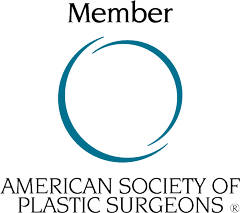
Today I saw a patient who had been operated on for a condition known as “tuberous breast deformity” and asymmetry. Tuberous breast deformity occurs when a patient has a narrow base of the breast. The fold underneath the breast is tight or narrow and the breast mass appears to hang over the breast base. The term “tubular” breast deformity is also used to describe this as the breast has a tubular shape instead of rounded one. Some patients are also unfortunate in that their tubular breasts are also different in size.
These patients present a challenge from the technical point of view. There is no accepted general consensus on how to “fix” a tuberous breast, which means no single approach works well for everybody. On top of that, you have to make the two different sized and shaped breasts match as much as possible. Unlike cancer patients, who are battling a grave disease, and realize their involved breast is somehow “damaged” and in need of reconstructive surgery, the tuberous breast deformity patient wants to make her natural breasts “match” and be “prettier” than they are now. Their expectations are much higher than the mastectomy patient. From the surgeons viewpoint, the surgery is more difficult than a breast reconstruction and the patient is harder to please.
The patient I saw today was very unhappy with the previous surgeon. She had been concerned about scarring and had wanted “natural looking” breasts. Looking at her, I think I understand what the previous surgeon thought. Since she was so adamant about scarring, he decided to place the scar under the breast fold. This would hide the scar, but also eliminated the chance to reposition the nipple-areolar complex. As a result, the patient got a “hanging breast” with a downward pointing nipple, which looks natural, as the patient stated she had wanted, but final result was not she was hoping for. I offered the patient a supra areolar scar (at the upper border of the areola) to bring the nipples to better position, and adjustable implants. She wanted to think about it, but I could tell she was not thrilled.
In summary, patients with asymmetry have to be psychologically ready for a certain amount of scarring. I use the supra areolar scar, as it is a minimal amount of scarring compared to the inverted T scar. The patient also should know she is going to look better, not perfect. Most patients are very happy, and this procedure really does change people’s lives.




alexandra says:
Dr. Ricardo L Rodriguez says:
Laura says: